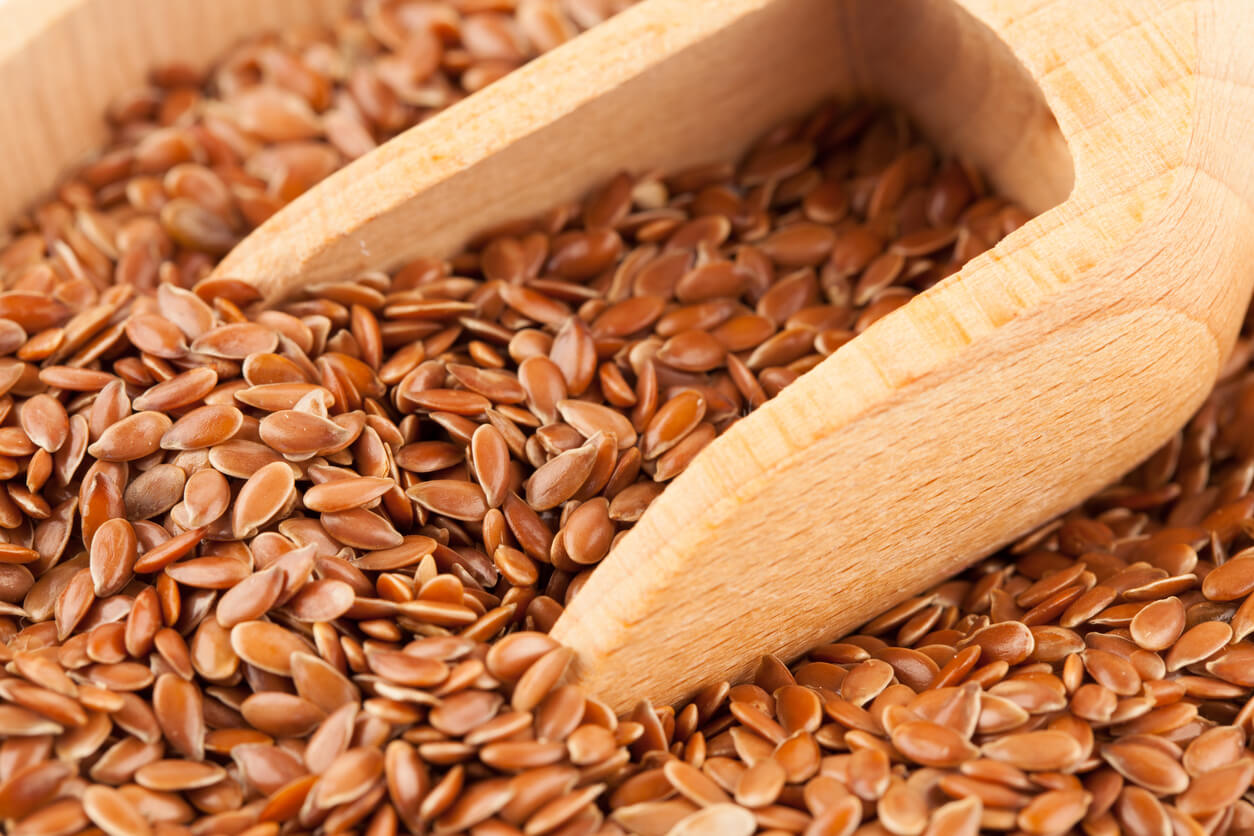How to Replace Eggs in Complementary Feeding


Written and verified by the nutritionist Saúl Sánchez Arias
Eggs are a food with high nutritional density, but sometimes, it’s necessary to substitute them in complementary feeding. As a general rule, this food shouldn’t be introduced before 9 months of age. In addition, it can lead to the development of allergies, some of which are transitory and others not. Be that as it may, knowing other products that can be included to replace eggs is essential in order to achieve the optimal development of little ones.
Before starting, we must point out that eggs have been the subject of many myths. Today, we know that they don’t negatively modify the lipid profile and that they don’t increase cardiovascular risk. However, the quality of the food will be determined by the lifestyle of the hen and the type of feed it consumes. It’s important to consume eggs from free-range hens that have been raised in the wild.
Alternatives to eggs in complementary feeding
In case of need, such as allergies, there are foods that can replace eggs in the diet of children. Below, we’ll you about some of them.
Artificial substitutes
There are some artificial egg substitutes that can be included in the children’s diet if necessary. They don’t have the same amount of nutrients but can help supplement protein needs. These nutrients are essential to ensure proper development. In fact, during the first stages of life, their requirements are increased, as stated in a study published in the Annals of Nutrition & Metabolism.
Flaxseed

To replace eggs, you also have the option of using a flaxseed gel. This isn’t the best alternative in terms of replacing egg nutrients, but it can work to mimic the organoleptic characteristics of eggs. At the same time, flax also has important substances inside, such as fiber. In addition, it has been shown to be key to ensuring good intestinal health, as it serves as an energy substrate for the bacteria that live in the intestine.
Oat flakes
Finally, oat flakes soaked in water can also be introduced in different preparations and thus bind the ingredients. In the case of meatballs or dishes containing minced meat, it can be an excellent alternative. For example, this tool is frequently used in the preparation of hamburgers. If necessary, it could even be replaced by chickpea flour.
Is egg allergy common?
Egg allergy is a problem that usually appears before the age of 5. Although it could be transitory, the symptoms usually remain, so it will be key to avoid the presence of this foodstuff in the diet.
Normally, people who are allergic to eggs experience a series of disorders after ingesting them. They usually suffer respiratory, dermatological, or intestinal reactions. In the most severe cases, vomiting, severe abdominal pain, and even anaphylaxis may develop. But the good news is that if the allergy is suffered during the first stages of life, the percentage of regression is high. Around 80 % of people experience the elimination of the allergy with a later progressive introduction of the food.
However, until the child is able to consume eggs normally, it may be necessary to restrict the foodstuff in the diet. The alternatives we’ve presented in order to replace eggs are appropriate for this purpose. It’s also important to check the allergen declarations on the labels of processed products.

Include foods to replace eggs in complementary feeding
As you’ve seen, there are different strategies to replace eggs in complementary feeding. However, keep in mind that we’re talking about one of the few products that contain vitamin D. If a child can’t consume eggs for the rest of their life due to an egg allergy, it may be necessary to supplement vitamin D to avoid deficiencies. Of course, exposure to sunlight will be decisive.
Don’t forget that breastfeeding should be offered until at least the first year of life. Breast milk is the best food for children under 12 months of age and can support development and immune function. It also has all the nutrients a baby needs.
Eggs are a food with high nutritional density, but sometimes, it’s necessary to substitute them in complementary feeding. As a general rule, this food shouldn’t be introduced before 9 months of age. In addition, it can lead to the development of allergies, some of which are transitory and others not. Be that as it may, knowing other products that can be included to replace eggs is essential in order to achieve the optimal development of little ones.
Before starting, we must point out that eggs have been the subject of many myths. Today, we know that they don’t negatively modify the lipid profile and that they don’t increase cardiovascular risk. However, the quality of the food will be determined by the lifestyle of the hen and the type of feed it consumes. It’s important to consume eggs from free-range hens that have been raised in the wild.
Alternatives to eggs in complementary feeding
In case of need, such as allergies, there are foods that can replace eggs in the diet of children. Below, we’ll you about some of them.
Artificial substitutes
There are some artificial egg substitutes that can be included in the children’s diet if necessary. They don’t have the same amount of nutrients but can help supplement protein needs. These nutrients are essential to ensure proper development. In fact, during the first stages of life, their requirements are increased, as stated in a study published in the Annals of Nutrition & Metabolism.
Flaxseed

To replace eggs, you also have the option of using a flaxseed gel. This isn’t the best alternative in terms of replacing egg nutrients, but it can work to mimic the organoleptic characteristics of eggs. At the same time, flax also has important substances inside, such as fiber. In addition, it has been shown to be key to ensuring good intestinal health, as it serves as an energy substrate for the bacteria that live in the intestine.
Oat flakes
Finally, oat flakes soaked in water can also be introduced in different preparations and thus bind the ingredients. In the case of meatballs or dishes containing minced meat, it can be an excellent alternative. For example, this tool is frequently used in the preparation of hamburgers. If necessary, it could even be replaced by chickpea flour.
Is egg allergy common?
Egg allergy is a problem that usually appears before the age of 5. Although it could be transitory, the symptoms usually remain, so it will be key to avoid the presence of this foodstuff in the diet.
Normally, people who are allergic to eggs experience a series of disorders after ingesting them. They usually suffer respiratory, dermatological, or intestinal reactions. In the most severe cases, vomiting, severe abdominal pain, and even anaphylaxis may develop. But the good news is that if the allergy is suffered during the first stages of life, the percentage of regression is high. Around 80 % of people experience the elimination of the allergy with a later progressive introduction of the food.
However, until the child is able to consume eggs normally, it may be necessary to restrict the foodstuff in the diet. The alternatives we’ve presented in order to replace eggs are appropriate for this purpose. It’s also important to check the allergen declarations on the labels of processed products.

Include foods to replace eggs in complementary feeding
As you’ve seen, there are different strategies to replace eggs in complementary feeding. However, keep in mind that we’re talking about one of the few products that contain vitamin D. If a child can’t consume eggs for the rest of their life due to an egg allergy, it may be necessary to supplement vitamin D to avoid deficiencies. Of course, exposure to sunlight will be decisive.
Don’t forget that breastfeeding should be offered until at least the first year of life. Breast milk is the best food for children under 12 months of age and can support development and immune function. It also has all the nutrients a baby needs.
All cited sources were thoroughly reviewed by our team to ensure their quality, reliability, currency, and validity. The bibliography of this article was considered reliable and of academic or scientific accuracy.
- Richter M, Baerlocher K, Bauer JM, et al. Revised Reference Values for the Intake of Protein. Ann Nutr Metab. 2019;74(3):242-250. doi:10.1159/000499374
- Gill SK, Rossi M, Bajka B, Whelan K. Dietary fibre in gastrointestinal health and disease. Nat Rev Gastroenterol Hepatol. 2021;18(2):101-116. doi:10.1038/s41575-020-00375-4
This text is provided for informational purposes only and does not replace consultation with a professional. If in doubt, consult your specialist.








